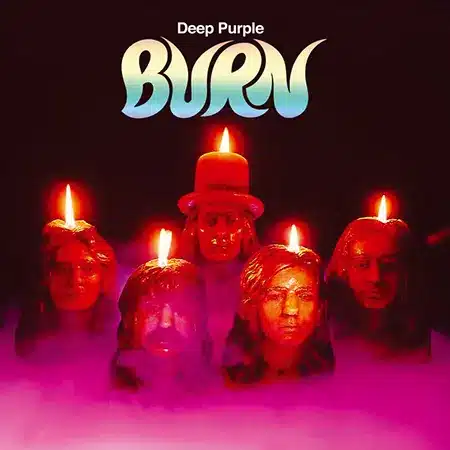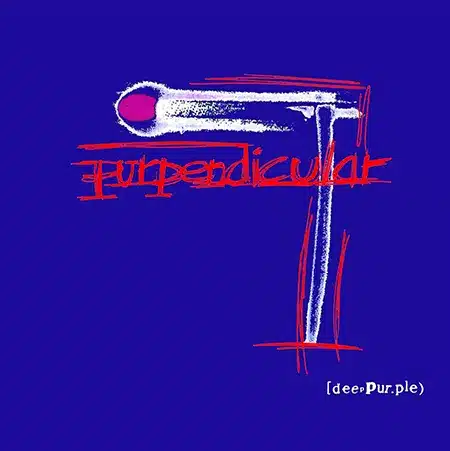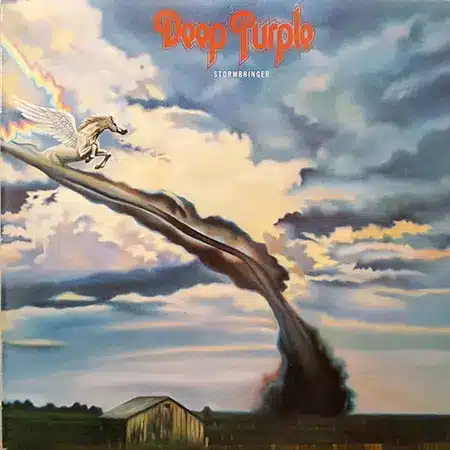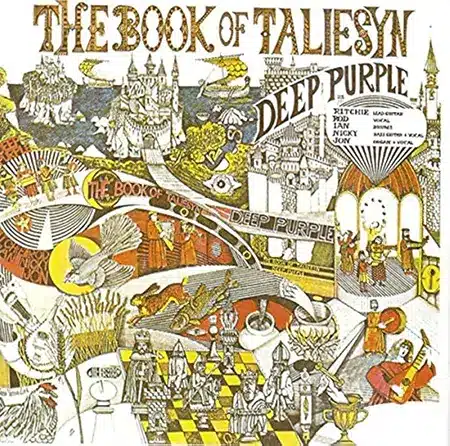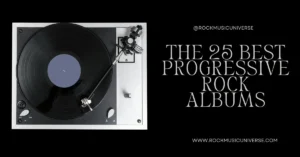🎸 1. Machine Head (1972)
Lineup: Gillan, Blackmore, Glover, Lord, Paice
Highlights: “Smoke on the Water”, “Highway Star”, “Lazy”
Why It’s Great:
Arguably their magnum opus, Machine Head is the quintessential Deep Purple album. It opens with the driving “Highway Star” — a proto-metal anthem — and delivers one of the most iconic rock songs ever: “Smoke on the Water.” Blackmore’s riffing, Jon Lord’s heavy Hammond organ, and Ian Gillan’s soaring vocals define the hard rock genre.
🎤 2. In Rock (1970)
Lineup: Gillan, Blackmore, Glover, Lord, Paice
Highlights: “Child in Time”, “Speed King”, “Into the Fire”
Why It’s Great:
The first album from the classic Mark II lineup, In Rock was a declaration of intent. After the more orchestral early period, the band turned toward aggressive hard rock. “Child in Time” is an epic progressive ballad, while “Speed King” explodes with raw energy. It was groundbreaking for heavy music.
🔥 3. Burn (1974)
Lineup: Coverdale, Hughes, Blackmore, Lord, Paice
Highlights: “Burn”, “Mistreated”, “Sail Away”
Why It’s Great:
With the arrival of David Coverdale and Glenn Hughes, Burn marked a new era. It introduced funk and soul influences without losing heaviness. The title track is one of the band’s fastest and most energetic songs, and “Mistreated” is a bluesy classic. Coverdale and Hughes brought vocal dynamism.
🌌 4. Fireball (1971)
Lineup: Gillan, Blackmore, Glover, Lord, Paice
Highlights: “Fireball”, “The Mule”, “Fools”
Why It’s Great:
Often overshadowed by In Rock and Machine Head, Fireball is more experimental and diverse. It blends hard rock with progressive tendencies. “The Mule” and “Fools” show the band stretching out creatively. It’s a hidden gem in their catalog.
⚔️ 5. Perfect Strangers (1984)
Lineup: Gillan, Blackmore, Glover, Lord, Paice
Highlights: “Perfect Strangers”, “Knocking at Your Back Door”, “Nobody’s Home”
Why It’s Great:
After an 11-year breakup, the Mark II lineup reunited and delivered a surprisingly strong album. “Perfect Strangers” became a concert staple, blending mysticism with modern hard rock. This album proved that Deep Purple could still compete in the 1980s.
🎹 6. Made in Japan (1972, Live Album)
Lineup: Gillan, Blackmore, Glover, Lord, Paice
Highlights: “Highway Star”, “Child in Time”, “Space Truckin’”
Why It’s Great:
While technically a live album, Made in Japan deserves mention. It’s considered one of the greatest live rock albums ever, showcasing the band’s virtuosity and improvisational skills. The extended jams are legendary, especially Blackmore and Lord’s interplay.
🧠 7. Purpendicular (1996)
Lineup: Gillan, Morse, Glover, Lord, Paice
Highlights: “Sometimes I Feel Like Screaming”, “Vavoom: Ted the Mechanic”, “Loosen My Strings”
Why It’s Great:
The first studio album with Steve Morse on guitar, Purpendicular revitalized Deep Purple. It’s melodic, progressive, and modern without feeling forced. Morse’s style brought new textures, and the songwriting was surprisingly strong for a veteran band in the ’90s.
🥀 8. Stormbringer (1974)
Lineup: Coverdale, Hughes, Blackmore, Lord, Paice
Highlights: “Stormbringer”, “Soldier of Fortune”, “Holy Man”
Why It’s Great:
Continuing the funk-rock blend from Burn, this album leaned even more into soul and R&B. Though divisive, it’s beloved for “Soldier of Fortune” — a haunting, emotional ballad. It’s also the last album before Blackmore left for Rainbow.
🕯️ 9. Who Do We Think We Are (1973)
Lineup: Gillan, Blackmore, Glover, Lord, Paice
Highlights: “Woman from Tokyo”, “Rat Bat Blue”, “Place in Line”
Why It’s Great:
Though recorded during a turbulent time for the band, this album still has standout moments. “Woman from Tokyo” is a fan favorite, and the rest of the album shows the band’s blues-rock chops. It’s uneven but essential.
🧬 10. The Book of Taliesyn (1968)
Lineup: Evans, Blackmore, Simper, Lord, Paice
Highlights: “The Shield”, “Anthem”, “Kentucky Woman”
Why It’s Great:
From the Mark I era, this album shows Deep Purple’s psychedelic and progressive roots. Their cover of Neil Diamond’s “Kentucky Woman” and original compositions like “Anthem” hint at future grandeur. It’s often overlooked but shows their early artistic ambition.
Honorable Mentions
- Come Taste the Band (1975): With Tommy Bolin on guitar, a funky, soulful album with great moments.
- Now What?! (2013): Modern Deep Purple at its best — mature, atmospheric, and cohesive.
- Rapture of the Deep (2005): A strong Morse-era album with dark textures and progressive leanings.
- Deep Purple (1969): Their third album features a full orchestral piece with Jon Lord’s vision: “Concerto for Group and Orchestra.”
Final Thoughts
Deep Purple’s legacy isn’t limited to one era. The Mark II lineup (Gillan/Blackmore/Glover/Lord/Paice) is considered definitive, but the Coverdale/Hughes era added soul, and the Steve Morse era brought rejuvenation and longevity.




